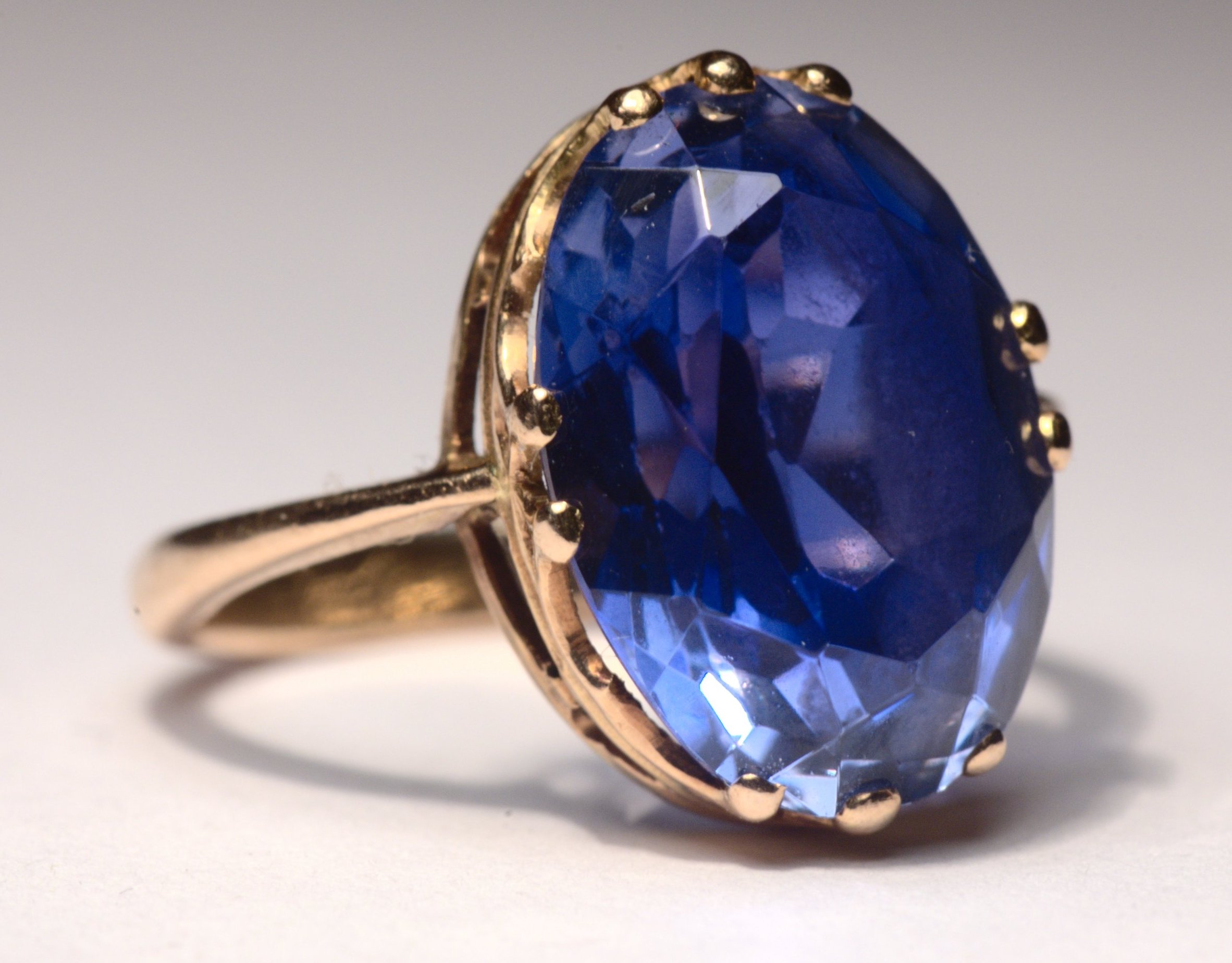
Blue Gemstones List – My Top 10
Blue gemstones are probably the most popular gemstones to be used in jewelry. If you are in search for a list of blue gemstones to compare properties, advantages, disadvantages and prices, you have come to the correct place. In this article, I will introduce a blue gemstones list together with important information regarding each stone.
Blue Gemstones List
Blue is indeed a great color for any jewelry. The famous engagement ring of Princess Diana which was later used by Princess Kate is made with a 12 carat Royal Blue sapphire from Sri Lanka (Ceylon). This speaks for the royalty and the admiration of the blue color jewelry.
Therefore, I have come up with my top 10 blue gemstones list which you can use in your day to day jewelries as well as in statement jewelries. This list is not created in any specific order and therefore, please do not consider it as ranked from 1 to 10. Depending on the advantages and disadvantages, which I will highlight, you can choose the best stone for your requirement.
(Note : If you are planning to purchase gemstones or jewelry, this guide will give you some valuable tips)
1. Blue Sapphire
I am from Sri Lanka (previously known as Ceylon) and Sri Lanka is the most famous destination for blue sapphires. The color of the best Ceylon blue sapphires is unmatched to any other gemstone found in the world. Although there are several colors of sapphires, blue is definitely the most popular.
Blue sapphires is also arguably the most desired colored gemstone for engagement rings. Sapphire has a hardness of 9 in the Moh’s scale of hardness which is second only to diamond. Due to its compact structure, sapphires are even more resistant to cracking and chipping than diamond.
Blue sapphires are quite expensive. The stone comes in a range of different color hues and price depends on the exact color. In most countries, “Royal Blue” sapphires are the most expensive while in certain countries ( e.g. in Australia), “Corn Flower Blue” is the most sought after color. Heat treatment and certain other types of treatments are common for sapphires and the price will also depend on the exact type of treatment. (More details of determining the value of blue sapphires are given here)
Blue sapphire is also the birthstone for the month of September. Synthetic sapphires are widely available in the market today and hence, please stick to the guidelines I have shared when buying these gemstones or jewelries.
| Physical Properties | Advantages | Disadvantages |
|
Hardness – 9 Refractive Index – 1.76 – 1.77
(Refractive index is a measure of the brilliance or the luster of the stone) |
A unique gemstone.
High durability and high brilliance.
|
It is an expensive gemstone
|
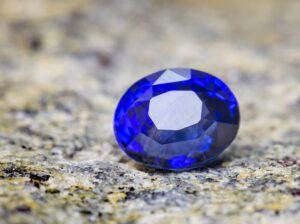
2. Blue Diamonds
Diamonds are one of the most expensive types of gemstones. Blue diamond is one of the rarest types of diamonds and prices could be as high as $ 200,000 for a half a carat stone.
Diamonds are the hardest material on earth with a hardness of 10 in the Moh’s scale and therefore it is the ultimate scratch resistant material. But diamonds are not as tough as sapphire and it can chip or crack if faced with a hard knock.
There are different tones of blue diamonds available and as per GIA classification, the highest ratings goes for the “fancy vivid” color diamonds.
Synthetic blue diamonds are also available in the market and hence, buying from a highly trusted source such as Leibish is recommended.
You can check their blue diamond prices here.
| Physical Properties | Advantages | Disadvantages |
|
Hardness – 10
Refractive Index – 2.417 – 2.419
|
Very rare and hence it will definitely be a very unique possession.
Diamonds are the most durable gemstone and also the gemstone with the highest luster. |
Very high prices
Hard to find
|
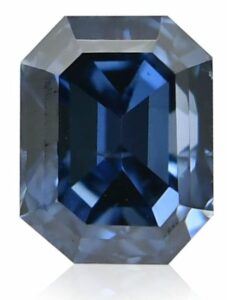
3. Aquamarine
The word aquamarine means “sea water” in latin. The name is very appropriate for this stone as it comes in all shades of different sea water colors, even the greener shades. The blue aquamarines have a very soft blue which has an amazing soothing effect.
Aquamarine belongs to the beryl family of gemstones, which is the same as for emeralds. It has a hardness of 7.5 – 8 and quite tough as well. Properly faceted aquamarine stones consists of a great luster. There are several different blue tones of aquamarine and the most expensive is the moderately strong, medium to dark, very slightly greenish blue.
Heat treatment to enhance the color is a common practice for aquamarine. Due to its affordable prices, hardness and toughness, it is a great choice for day to day jewelry. Aquamarine is also a birthstone for the month of March.
| Physical Properties | Advantages | Disadvantages |
|
Hardness – 7 – 7.5
Refractive Index – 1.57 – 1.58 |
Relatively affordable prices
High Durability |
The color range might not be suitable for some jewelry
|
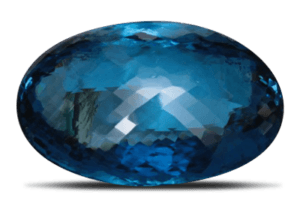
4. Blue Topaz
This is one of the most popular and affordable blue gemstones. Blue topaz is made by subjecting colorless topaz to irradiation. Sky blue, Swiss blue and London blue are the three most common types of blue topaz and London blue is probably the most popular.
It has a hardness of 8 but it is prone to chipping due to its cleavage. Finding sizable stones free of inclusions isn’t that hard and it also has a good brilliance. Topaz is the birthstone for the month of November.
| Physical Properties | Advantages | Disadvantages |
|
Hardness – 8
Refractive Index – 1.61 – 1.638
|
Very affordable prices
Good luster
High resistance to scratching
Stones free of inclusions are readily available |
Prone to chipping
|

5. Tanzanite
Tanzanite is a gemstone which was discovered in 1967 and became popular in a short period of time. It comes in a range of blue tones and the strong bright blue tanzanite can be expensive.
It has a hardness of 6.5 – 7 which is relatively low but jewelry can last long when used with care. Tanzanite with strong vivid blue can also be used as a less expensive alternative to blue sapphires. It is also a birthstone for the month of December.
| Physical Properties | Advantages | Disadvantages |
|
Hardness – 6.5 – 7
Refractive Index – 1.69 – 1.7 |
Inexpensive compared to blue sapphires and diamonds
Good luster |
Prone to scratching
|
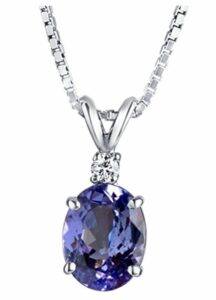
6. Blue Spinel
Spinel is another very popular and a beautiful gemstone, and red and blue spinels are the most expensive. There are few different shades of blue spinel and the color variation known as cobalt blue is very rare and could be even more expensive than blue sapphires.
Spinel has a hardness of 8 in the Moh’s scale of hardness and a refractive index of 1.71. Therefore, this stone is a very durable gemstone with good brilliance and it is a great choice for everyday jewelry. Spinel is also an August birthstone.
Although not as common as synthetic sapphires, lab grown spinels are available. The GRS (Gem Research Swiss Lab) issued a notice about lab grown spinels in 2015. As cobalt blue spinel is extremely rare, some sellers treat light color spinel with cobalt to get that color.
Therefore, when you are purchasing spinel gemstones or jewelry, you should buy from a trustworthy seller or request for a gemstone certificate. (When buying any type of expensive gemstone or a jewelry, buying from a trustworthy seller is a must as there are so many different ways which you can get ripped off)
| Physical Properties | Advantages | Disadvantages |
|
Hardness – 8
Refractive Index – 1.712 – 1.736 |
High durability
Good brilliance |
Blue spinel can be expensive
|
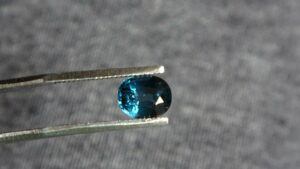
7. Blue Tourmaline
Tourmaline in general is a very popular gemstone including blue tourmaline which is also known as Indicolite. Tourmaline is considered as a birthstone for the month of October.
With a hardness of 7 – 7.5, it has a good durability. It is also an affordable gemstone and comes in a range of different blue tones. Heat treatments are common for tourmalines and buying treated stones should not be that much of a concern. If the seller is claiming that the stone is free of treatments, it is better to ask for a gemstone certificate to prove that claim.
A rare variation of tourmaline, which is called Paraiba Tourmaline also has a very unique blue tone. More about this stone and its prices can be found here.
| Physical Properties | Advantages | Disadvantages |
|
Hardness : 7 – 7.5
Refractive Index : 1.616 – 1.65
|
Durable
Prices are generally affordable
Has a good brilliance |
Some stones can be expensive based on factors such as color tone, clarity and weight.
|
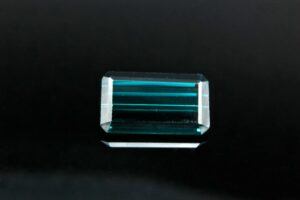
8. Blue Zircon
Zircon is a gemstone with a great brilliance since it has a very high refractive index. It is also used as an alternative for diamonds due its high luster. Blue zircon is also considered as one of the most brilliant gemstones and it comes in a range of blue hues.
Zircon has a hardness of 7.5 which is considered as a fairly decent hardness for jewelry. However, it is a relatively brittle gemstone and can chip or crack. Zircons are another birthstone for the month of December.
| Physical Properties | Advantages | Disadvantages |
|
Hardness : 7.5
Refractive Index : 1.93 – 1.987
|
Prices are generally affordable
Has a great brilliance |
Prone to chipping and cracking
|
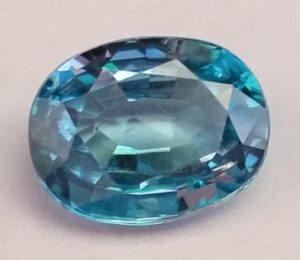
9. Lapis Lazuli
Lapis Lazuli is very popular as a healing crystal. It is a gemstone which has been used in jewelry for many thousands of years and it was also a popular stone among the ancient Egyptian emperors.
Lapis lazuli has a unique celestial blue which should be the reason for its popularity among ancient emperors. However, its hardness is only 5 – 5.5 which makes it easily scratchable. But, with proper care, these jewelry can last for a long time. It is an opaque gemstone and some stones contains white or gold color inclusions on the surface which gives it a unique texture.
| Physical Properties | Advantages | Disadvantages |
|
Hardness : 5 – 5.5
Refractive Index : 1.5
|
Inexpensive stone
The blue color is very unique
Less brilliance |
Prone to scratching
As it is available only in the opaque form, might not be suitable for certain jewelry types and designs.
|
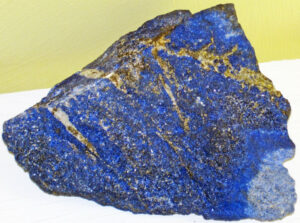
10. Turquoise
Turquoise is a gemstone which has a very unique blue color and the color “turquoise” was also named after this stone. Just like lapis lazuli, turquoise is also an opaque gemstone with dark lines like inclusions on the surface. These inclusions are called as matrix and it creates a unique texture. However, natural turquoise without the matrix is more expensive. Turquoise is also a birthstone for December.
There is another cheaper version of turquoise which is made by natural turquoise powder. These are much cheaper and I personally will not recommend using those for your jewelry. Genuine sellers will disclose if they have use this semi-natural turquoise in their jewelry.
Hardness of turquoise is 5 – 6 and therefore it can get scratched easily. The stone also contains minuscule veins like formations where water or other liquids can pass through (known as porous). Therefore, turquoise can get damaged if exposed to chemicals and rough use.
| Physical Properties | Advantages | Disadvantages |
|
Hardness : 5 – 6
Refractive Index : 1.61 – 1.65
|
Affordable prices
The blue color is very unique
Less brilliance |
Prone to scratching and breaking
As it is available only in the opaque form, might not be suitable for certain jewelry types and designs. |
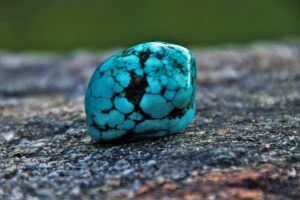
Final Thoughts
This article was written with the objective of introducing a blue gemstones list which can be used for different types of jewelry. As mentioned earlier, the list was not created on any specific order and hence you can select any gemstone you like by paying attention to advantages and disadvantages of each different stone.
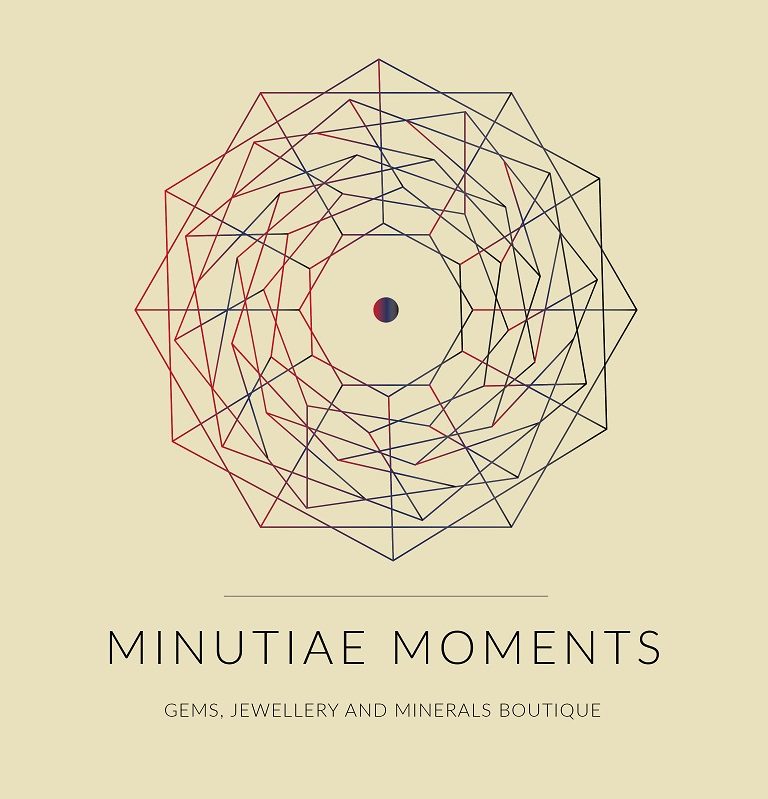
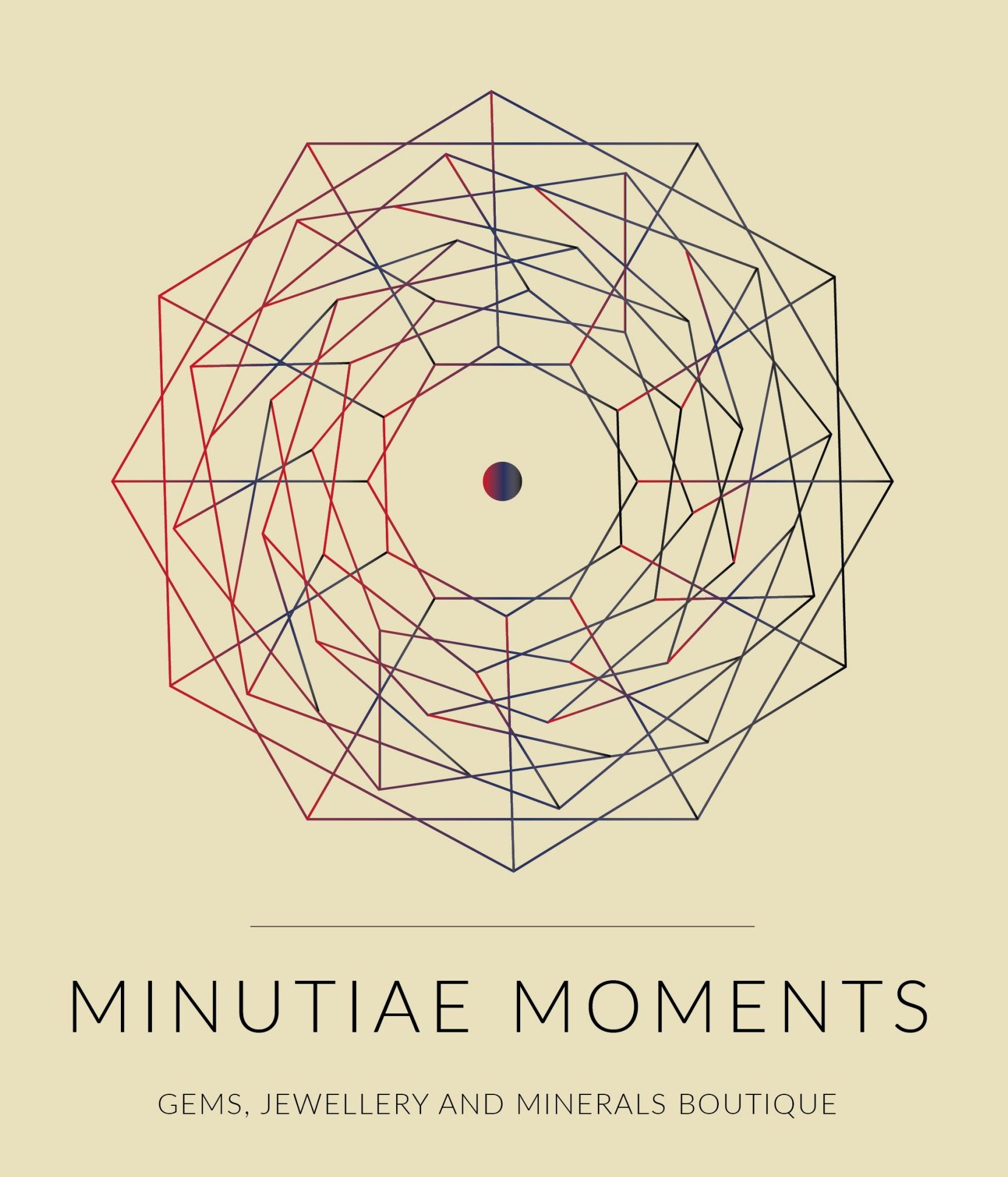
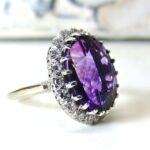
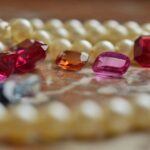
what a world of beautiful blue stones! You have explained it really well. I am thinking of buying the aquamarine for my next birthday.
Thank you
Habib
Thank Habib. Great choice, I also like aquamarine very much.
Beautiful gems! I had no idea blue sapphire was so difficult to scratch because it is so dense. Very informative!
Hey, Thanks. Glad you learned something new.